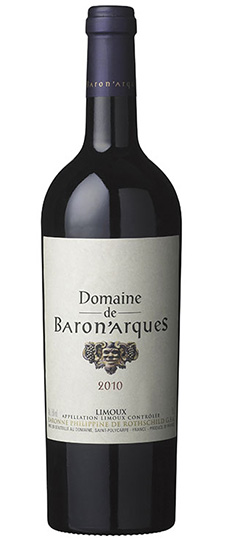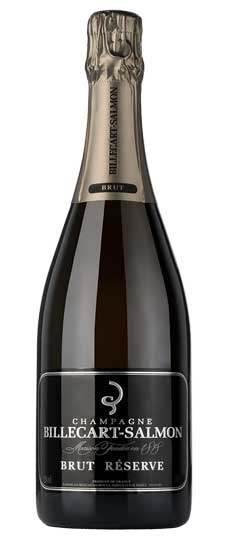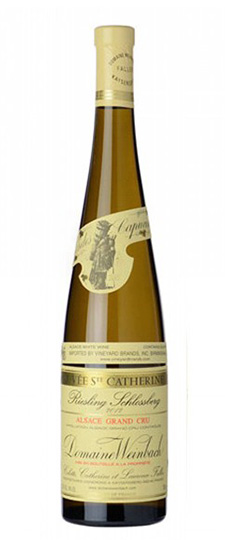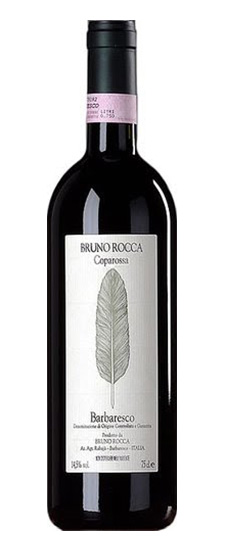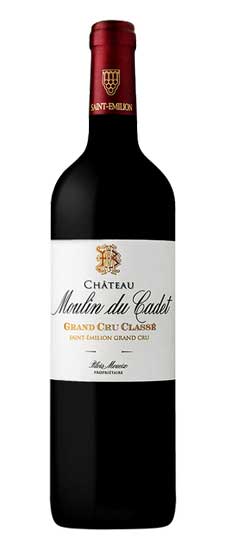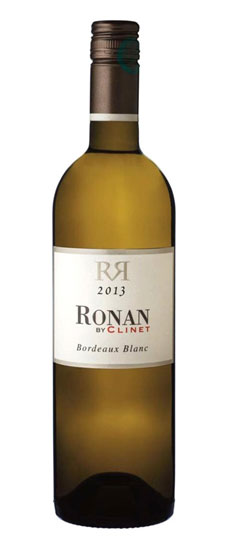Wine Score
Jancis Robinson
Putty nose. Slightly astringent but deeper flavoured than most. Fades a little fast.
Gilbert & Gaillard
Beautiful light gold. Elegantly fruity, slightly jammy nose. Fleshy, melted, full mouthfeel, delicately infused with fruit. Closely-integrated, long, extremely harmonious. A very successful dry sparkling wine.
Grape Variety
Champagne Blend Wine
The term Champagne Blend refers to one of the world’s most distinctive wine styles – the sparkling wines made from Pinot Noir, Chardonnay and Pinot Meunier that are most famously associated with the Champagne region of northern France. The term, however, has come to evoke wines made in the methode traditionnelle around the world, and particularly in New World countries like the United States, Australia, New Zealand and South Africa.
Pinot Noir and Chardonnay are the stars of the blend, usually used in roughly equal quantities in New World examples. The less glamorous Pinot Meunier really only comes into play in real, pure-blooded Champagne. In fact, there are seven permitted grape varieties in the Champagne AOC, although the remaining four – Pinot Gris, Pinot Blanc, Petit Meslier and Arbane – are so rarely used that they are typically forgotten, and are almost never used for sparkling wine production outside of Champagne (save for Pinot Blanc, which is used in Italy’s sparkling Franciacorta wines, and in Alsace).
Champagne Blend
The development of the Champagne Blend was not as deliberate as it might seem; the grapes that were chosen for cultivation in Champagne were those that were most likely to ripen in the cool continental climate of northern France. At a latitude of 49°N, Champagne is among the most northerly and coldest viticultural regions in the world. Its average growing season temperatures are several degrees lower than those found in California, Tasmania, Marlborough and the Western Cape, the regions that use Pinot and Chardonnay grapes in their sparkling wines. The cold autumns in Champagne make it a challenge to ripen grapes fully and to drive ferments through to completion. It was the latter fact that (according to legend) led the monk Dom Perignon to observe that unfermented sugar started a secondary fermentation in his bottles – and so began the development of the world’s most famous sparkling wine.
Other than the ability to ripen in cool climates, the three grapes all contribute something particular to Champagne Blend wines. Pinot Noir adds structure and brings a certain berryfruit nose to the blend, while the Chardonnay fleshes this out and sets the wine up for aging, particularly when the base wine is aged in oak. Pinot Meunier, the more widely planted of the three in the Champagne vineyards, is more of an insurance policy than a vital fine-wine component. Not only is it the first of the trio to bud and flower (avoiding the risk of frost damage) but it is also the first to ripen. This is a considerable advantage in any cool-climate wine region, and more than compensates for Pinot Meunier’s lack of flavor. This explains why “Champagne Blend” in the warmer regions of the New World so rarely refers to wines containing Pinot Meunier.
Variations on the Champagne blend are used all over the world, in the crémant wines of Alsace and Burgundy, in Italy’s top sparkling wine Franciacorta, and modern styles of Cava. The other members of the Pinot family (Pinot Gris and Pinot Blanc) are the other main varieties used in these variations. There is no question, however, that the classic Champagne Blend (or at least two-thirds of it) has proved its worth in vineyards the world over.
Food matches for Champagne Blend wines include:
- Smoked salmon terrine
- Pork and prawn dumplings
- Fried chicken with chilli mayo
Region
Champagne Brut Wines
Champagne Brut is dry, sparkling wine from the Champagne region of northern France. Champagne of any color can be brut, both the standard white and Rosé. It is made from the classic Champagne Blend (typically Chardonnay, Pinot Noir and Pinot Meunier) but in theory can also include the four lesser-known Champagne varieties: Pinot Blanc, Pinot Gris, Petit Meslier and Arbane.
The French word brut translates roughly as ‘raw’, and in this sense it indicates a wine bottled in its natural, raw state – i.e. without a significant addition of sweetness (dosage). In practice, almost all brut Champagnes do receive a small addition of sweetness prior to final bottling. Nowadays, the terms “brut nature” and “zero dosage” are used to indicate champagnes with no dosage at all. See Brut Nature.
 Champagne Brut
Champagne Brut
Rows of riddling racks in Champagne
The laws governing Champagne wine labels define brut wine as “containing less than 15 grams per liter of sugar”. This same definition is reflected in E.U. law, and applies to sparkling wines from all European countries. In non-sparkling wines, which lack Champagne’s sparkle and high acidity, this much sugar would leave the wine perceptibly sweet.
The brut style was pioneered by top-end Champagne house Perrier-Jouet in the mid-19th Century, originally for their extensive market in England. The 1846 vintage marked the beginning of a new era; in that year Perrier-Jouet took the brave decision not to add any sugar to their wines destined for the English market. Prior to this, Champagne had always been sweetened, but the drier, unsweetened style soon gained in popularity. Technically speaking, what Perrier-Jouet created would now be defined as Brut Nature.
In the late 20th and early 21st Centuries, dry, white, brut Champagne has become the default. It is now vastly more popular than sweeter styles such as Sec, Demi-Sec and Doux.
The other official Champagne sweetness levels:
- Doux (50+ g/L)
- Demi-sec (33–50 g/L)
- Sec (17–35 g/L)
- Extra-Sec (12–20 g/L)
- Brut (0–12 g/L)
- Extra Brut (0–6 g/L)
- Brut Nature/Zero (0–3 g/L).
Producer Notes
Champagne Billecart-Salmon, Mareuil-Sur-Aÿ, Champagne
Size of vineyards
The House cultivates an estate of 100 hectares and obtains grapes from an area totalling 220 hectares, in 40 crus of Champagne region. The majority of the grapes used for vinification come from a radius of 20km around Epernay.
Winemaker
François Domi, Chef de Cave
The history/story of the vineyard.
Christof studied Business Administration at Vienna University intent on pursuing a career in banking. His astute business sense alerted him to the fact that working in his father’s wine business during his studies enhanced his financial and, naturally, his social quality of life no end! During his first university vacation in 1997 he travelled to wine fairs in the USA, Panama and Italy. By the end of the summer he had experienced the challenges and excitement of his first harvest. Before he knew it he was hooked, dreams of banking a distant memory. The next summer breaks were filled with internships at wineries in Sonoma, Carmernet, Leeuwin Estate, Margaret River and Graf Hardegg, Austria. Christof was keen to learn as much about different wine making techniques across the world. An OIV wine marketing programme at UC Davies and visits to the wine regions of South Africa helped round of his training.
15 years on he owns and runs Hoepler a 47 hectare estate on the slopes of the Leitaberg Hills on the shores of the Neusieedlee Lake in Austria. This unique microclimate enables Hoepler to make white, red and dessert wines. Hoepler exports 70% of its wine to 35 States in USA, UK, Holland, the Baltics and Scandinavia. Gordon Ramsay, Jamie Oliver, the Queen Mary II, The Estonian Prime Minster and the famous von Trapp Family Lodge of Sound of Music fame are just some of his more well known customers. His wines have won numerous Gold medals at the International Wine Challenge in London, the AWC, Vienna, Wine Spectator and Wine Enthusiast in the USA and he even won 99 points by Wine Enthusiast for his dessert wine, something he is still trying to top! Christof lectures at the University of Applied Sciences in Krems, Austria.
In 1818, Nicolas François Billecart and his spouse Elisabeth Salmon founded their Champagne House in Mareuil-Sur-Aӱ where the Billecart family has been established since the 17th Century. Since the early 19th Century six generations have succeeded each other at the family home in the heart of the Champagne Region each living by the same motto: “Give priority to quality, strive for excellence”.
Two of the House’s vintage cuvées have since been named in honour of the two founders. The Cuvée Nicolas François Billecart was created in 1964, with the Cuvée Elisabeth Salmon Rosé following in 1988. Current vintages include the Cuvée Nicolas François Billecart 2002 which is soon to be joined by the Cuvée Elisabeth Salmon Rosé 2006, due for release at the end of 2015.
Today, the family perpetuates its legend thanks to François and Antoine Roland-Billecart, representing the sixth generation of the family, who lead this independent House in conjunction with their father, Jean Roland-Billecart.
Viticulture
House’s most exclusive cuvée is cultivated in the Clos Saint-Hilaire, with Pinot Noir grown from half a century of careful cultivation. This one hectare of precious land was planted in 1964 and is sheltered by a stone wall. Harvest after harvest, an exceptional champagne of rare complexity and stunning freshness is created. After several years of painstakingly tending the vines the first limited release of this unique cuvée was the 1995 vintage. Although not officially recognised, the production methods of the Clos Saint-Hilaire are all completely organic.
Winemaking style/philosophy.
The delicacy of Champagne Billecart-Salmon comes from combining the best traditions with the best modern vinification methods.
The House of Billecart-Salmon has preserved ancestral vinification methods handed down from generation to generation and is constantly perfecting them. Always conscious to improve the quality of their champagnes, in the fifties the House established the technique of chilling the must combined with the use of stainless steel tanks for a longer fermentation at a lower temperature. Over time, the wines conserve their freshness, the aromas intensify, allowing the Billecart-Salmon champagnes to deliver all it promises. On the perpetual quest for excellence, a new chai was built to hold more than 450 oak barrels to skilfully enhance the vinification of the vintage wines.
www.champagne-billecart.fr

